The Name: Corfu: The name Corfu comes from the word coryphi, which means peak and was used for the acropolis of the capital city. The modern Greek name Kerkyra comes from the nymph who was the daughter of the river-god Asopus. Poseidon, the god of the sea fell in love with her and made love to her on the island, giving birth to the race of the Phaeaceans. The name Kerkyra is only used in Greece. To the rest of the world the island is known as Corfu.
The Historical Timeline
PREHISTORIC:
30,000 to 7,000 BC – Artifacts from the Paleolithic period have been found in a cave at Gardiki in the southwest part of the island.
6,000 to 2,600 BC – several Neolithic settlements have been found including an important one in Sidari. This part of Corfu continued to be occupied during the Bronze Age (3,000 to 1,000 BC), with remains being found in Afionas, Ermones and Agios Stefanos west)
HISTORICAL YEARS: 734BC to 229AD
Around 750 BC – Greeks (Eretrians) from the island of Evea arrived on Corfu. Corfu supplied the Eretrians with lumber for ships and became an important stepping-stone to the west. 734 BC – A Corinthian colony established about this time replaced the settlement of Eretrians from Evea. Proudly independent and even hostile to its mother city of Corinth, the new colony was subdued (600 BC)
664 BC – Corfu fought with the city of Corinth in what is described (by Thucydides) as the first sea battle in Greek history. Not the last battle between the two cities that were at odds over economic matters for centuries. During the Persian wars of the 5th Century, Corfu had a fleet second only to Athens. In 431 BC it was over yet another dispute between Corfu and Corinth that led to the Peloponnesian wars, which was the WWII of it’s time, with all city-states of Greece taking the side of either Athens or Sparta. In 229 – Corfu was invaded and conquered by pirates from Illyria
30,000 to 7,000 BC – Artifacts from the Paleolithic period have been found in a cave at Gardiki in the southwest part of the island.
6,000 to 2,600 BC – several Neolithic settlements have been found including an important one in Sidari. This part of Corfu continued to be occupied during the Bronze Age (3,000 to 1,000 BC), with remains being found in Afionas, Ermones and Agios Stefanos west)
HISTORICAL YEARS: 734BC to 229AD
Around 750 BC – Greeks (Eretrians) from the island of Evea arrived on Corfu. Corfu supplied the Eretrians with lumber for ships and became an important stepping-stone to the west. 734 BC – A Corinthian colony established about this time replaced the settlement of Eretrians from Evea. Proudly independent and even hostile to its mother city of Corinth, the new colony was subdued (600 BC)
664 BC – Corfu fought with the city of Corinth in what is described (by Thucydides) as the first sea battle in Greek history. Not the last battle between the two cities that were at odds over economic matters for centuries. During the Persian wars of the 5th Century, Corfu had a fleet second only to Athens. In 431 BC it was over yet another dispute between Corfu and Corinth that led to the Peloponnesian wars, which was the WWII of it’s time, with all city-states of Greece taking the side of either Athens or Sparta. In 229 – Corfu was invaded and conquered by pirates from Illyria
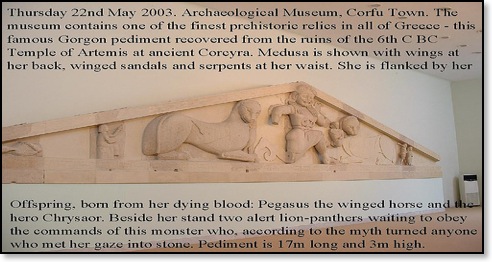
The Roman Reign 229 AD– 337AD
The pirates in turn were driven out by the Romans who gave the island autonomy, provided they were allowed to use it as a naval base. After the continuous civil and external wars, The Phaeacian state, which had been the greatest naval strength after Athens and the first Greek Democracy, could no longer be considered to have it’s own historical identity. It began to follow the general decline of the rest of the Greek State and its fate was tied to that of the different conquerors. The Phaeacians finally surrendered of their own accord to the romans in 229 BC, with a commitment on the side of the Romans to protect the island from destructive raids and looting no matter where they originated. At the same time they gave up all rights to appoint their own ruler to the island.
East roman Reign: 337 AD to 733 AD
Around the time of the emperor Constantine, the Roman State was divided into Administrations, Prefectures and Provinces. Corfu fell into the Administration of Illyria. With the death of Constantine in 337 and the division of the Roman State into North (Spain, France, England), the East (Constantinople, Asia, and the Eastern Provinces) and the West (Italy, Illyria, Greece and Africa), Corfu was included in the last mention. Finally under the emperor Theodosia, Corfu found herself in the eastern section of an empire that was divided into east and west only, a condition that existed for approximately three and a half centuries.
1204 AD – Captured by the Normans
1204 AD – When forces of the Fourth Crusade captured Constantinople, Corfu was ceded to Venice.
The pirates in turn were driven out by the Romans who gave the island autonomy, provided they were allowed to use it as a naval base. After the continuous civil and external wars, The Phaeacian state, which had been the greatest naval strength after Athens and the first Greek Democracy, could no longer be considered to have it’s own historical identity. It began to follow the general decline of the rest of the Greek State and its fate was tied to that of the different conquerors. The Phaeacians finally surrendered of their own accord to the romans in 229 BC, with a commitment on the side of the Romans to protect the island from destructive raids and looting no matter where they originated. At the same time they gave up all rights to appoint their own ruler to the island.
East roman Reign: 337 AD to 733 AD
Around the time of the emperor Constantine, the Roman State was divided into Administrations, Prefectures and Provinces. Corfu fell into the Administration of Illyria. With the death of Constantine in 337 and the division of the Roman State into North (Spain, France, England), the East (Constantinople, Asia, and the Eastern Provinces) and the West (Italy, Illyria, Greece and Africa), Corfu was included in the last mention. Finally under the emperor Theodosia, Corfu found herself in the eastern section of an empire that was divided into east and west only, a condition that existed for approximately three and a half centuries.
1204 AD – Captured by the Normans
1204 AD – When forces of the Fourth Crusade captured Constantinople, Corfu was ceded to Venice.
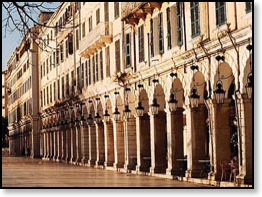
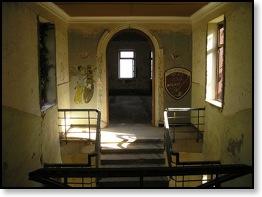
The Venetians – The first period 1204 - 1214
With the decline of the Roman Empire, there was a sharp increase in raids by Vandals. During this period Corfu suffered great devastation. When the Crusaders redistributed the Byzantine Empire in 1204, Corfu, along with other provinces, went to the Venetians, who captured the island in 1206 (after a strong resistance from the locals under the leadership of Vetrano) and established their own Deputy.
The Sovereignty of Ipirus 1214 – 1267
In 1214, Michael-Angelo Duca, Despot of Ipirus annexed Corfu to the newly established sovereignty of Ipirus. After his death, Michael-Angelo the Second built the impregnable stronghold of Angelokastro or Michael-Angelo Fort (on a map located on the West of the island above Paleokastritsa).
The Sicilian Dominions
The Sicilian leader, Manfred, marched against the forces o Michael who was forced to hand ove the island in 1259. However, in 1266 when Manfred was killed in battle, Philip Cinardo a Francocypriot king and Manfred’s admiral seized Corfu. This is, however followed by the murder of Cinardo and the handing over of Corfu to the Garnerio brothers and Thomas Alamanos, who up till then had been the leaders of his army.
The House of Anjou 1267 – 1386
In 1267 Charles of Anjou (King of the French State of Naples), conquered the island. The fort with Aimo Alamanos in charge, finally surrendered in April 1272. Charles the First was an excellent ruler but he was also fanatically opposed to orthodoxy and Hellenism. He tried to change the influence in Corfu of everything to do with the Church, administration and taxation, generally latinising the area, taking measures to make the whole state follow his own national consciousness.
However, this could never be fully realized as it brought him into direct confrontation with the people and the Church. Immediately, a Greek Orthodox conscience developed witch united the people and separated them from their Latin colonists. Despite all this, the Corfiots could not dream of deliverance from the Anjou because, besides the breaking up of the local consciousness, he had formed an alliance with the leader of the sovereignty of Ipirus which was the only country to whom Corfu would have hoped to turn for help.
** During the Anjou occupation large numbers of Jewish people, originally from the West, settled in Corfu and created their own community.
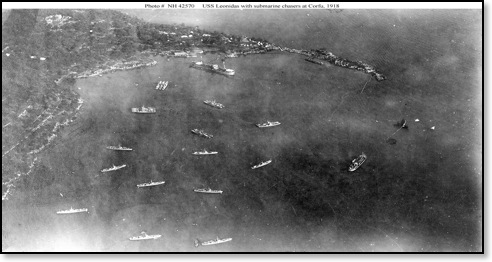
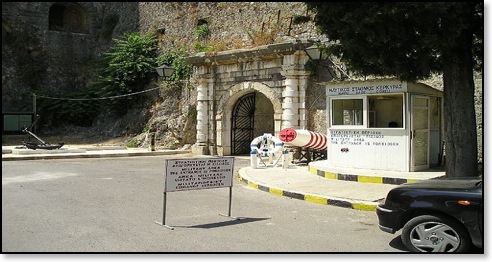
The Venetians – The Second Period 1386 – 1797:
Towards the end of the 14th century the Byzantine Empire and the sovereignty of Ipirus found themselves in a sharp decline and even though the rule of the Anjou in Corfu was weak, they ere in no position to interfere. However, another force, the Venetians, with their strong pro-Greek spirit tried using peaceful, diplomatic means to annex Corfu.
After numerous unsuccessful attempts, intense negotiations took place on the island, the pro-Venetian view was upheld with promises from the Venetian admiral Ioannis Miani that Corfu would be treated as an ally and not a enemy. This was followed by a successful attack on the fortification and the hoisting of the Venetian flag on 20 March 1386 at Corfu’s fort.
During the 400 years of Venetian rule, Corfu regained its prosperity. It was during this time that most of the millions of olive trees, which blanket the island, were planted. Construction of the town defenses and fortress installations were started in the 16th century after two devastating attacks by the Turks, who had overrun the Greek mainland. Because of the strong town walls, the Turks did not attack again until 1716, when Corfu repelled the invaders, thereby preventing the Turks from conquering the whole of Europe. The rest of Greece had fallen under the domination of the Ottoman Turks. In 1797 treaty passed the island to the French under Napoleon, who had just enjoyed a victorious campaign against Venice.
Saint Spiridon:
According to tradition, a Greek, recorded as having been both priest and wealthy citizen, George Kalocheiritis brought the relics of St. Spiridon and St. Theodora to Corfu Island from Constantinople.
Up to 1577 the relics of St. Spiridon (Protectore of the island) were placed in the privately owned church of the Bulgari Family (the present position of the Palace cinema).
Following the fortification of Corfu Town, the church was demolished. The relics were transported to a newer church, which was built inside the fortifications (its present location) and became the property of the Orthodox Church. Here he remains until today, universally loved and respected throughout the Ionian.
Four litanies were established during the Venetian occupation in the following chronological order:
- The Easter Saturday litany commemorating the miracle of the Saint for saving the island from famine
- The litany of Palm Sunday which was established for his saving the island from the plague of 1629
- The litany established for the first Sunday of November to commemorate the saving of the plague of 1673
- The August 11th litany to commemorate the saving of the island from the Turkish siege of 1716
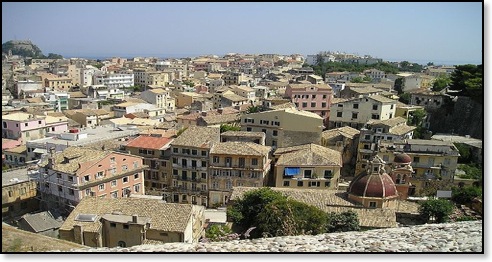
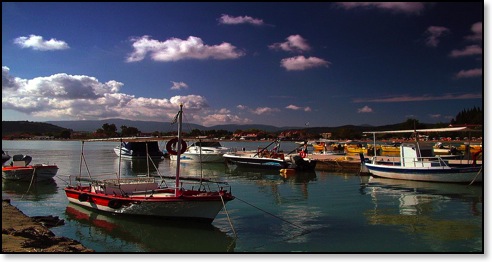
Russo-Turkish force
Two years later, a Russo-Turkish force took the island and, for the first time in its history, Corfu came under Turkish influence. But the people of Corfu objected, and the Russians gave them their independence, creating the Septinsular Republic, the first Greek state to exist since the Fall of Constantinople in 1453. Napoleon took the island again in 1807 and proceeded to strengthen the walls and to reconstruct most of the town. The famous Liston arcade was built at this time. Napoleon’s days were numbered and when he surrendered, Corfu and the Ionian islands were signed over as an independent state under the protection of Britain (1814).
The British
Corfu benefitted under the British, who initiated a vast program of public works, including roads and a permanent water supply to the town. A university was founded and a cosmopolitan atmosphere prevailed. However, in 1827 Greece gained its freedom from the Turks, and in Corfu there was a growing desire for union with mainland Greece. This wish was finally fulfilled on 21 May 1864, when the British ceded the Ionian island to Greece. Corfu’s varied history has left a fine legacy of architecture and culture which is unmatched by any other Greek island.
The Ionian Islands did not become a part of Greece until 1864 even though Ioannis Capodistrias (from Corfu) was elected the first President of Greece in 1827 and assassinated in 1831. Corfu was declared neutral territory but was invaded by French in World War I.
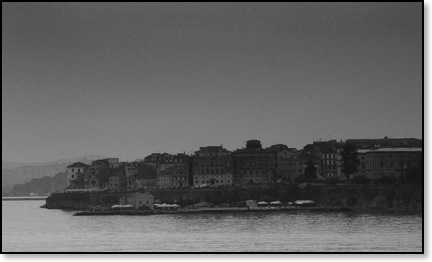

Sidari


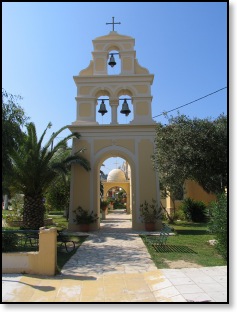

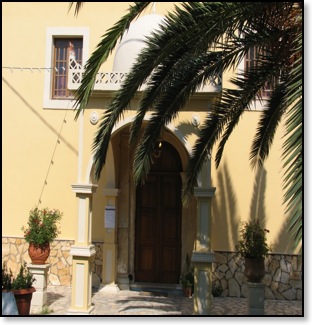
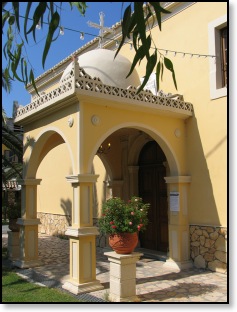
Contact Us - Newsletter - Membership - Gallery - Press & Media - Terms & Conditions - Help - Site Map ![]()
Corfu Office Tele: 0030-6936604377
Office Hours: Mon - Sat 8am to 2pm and 5pm to 8pm (+2 GMT)
E-Mail: info@corfubyu.com![]()
![]()